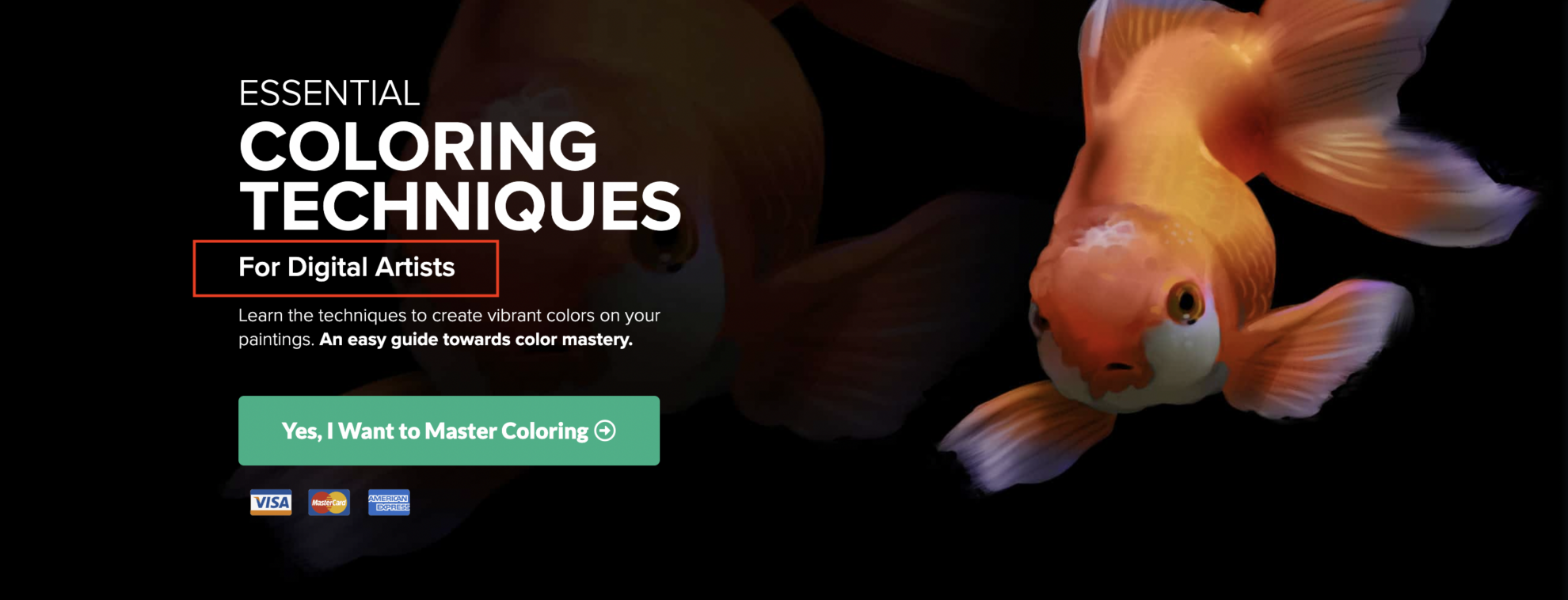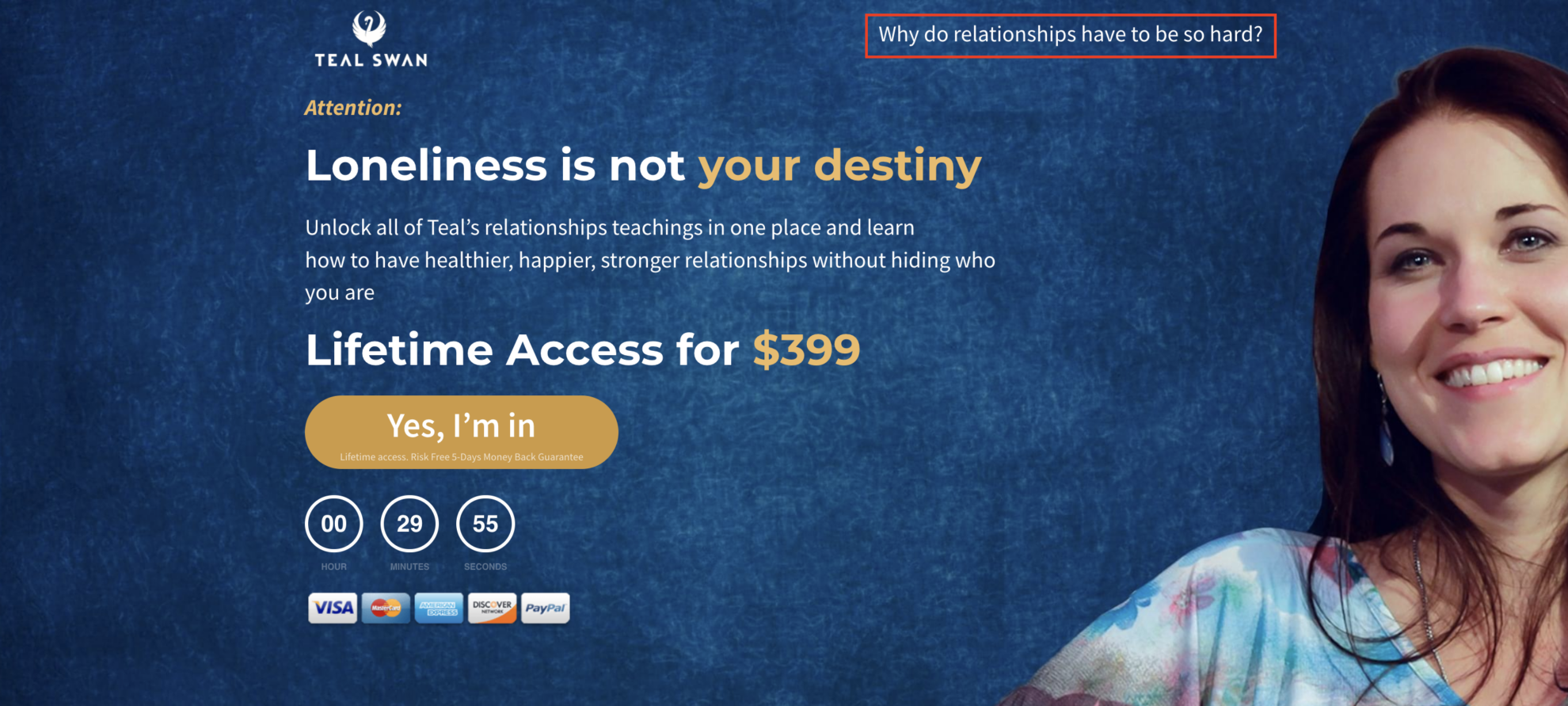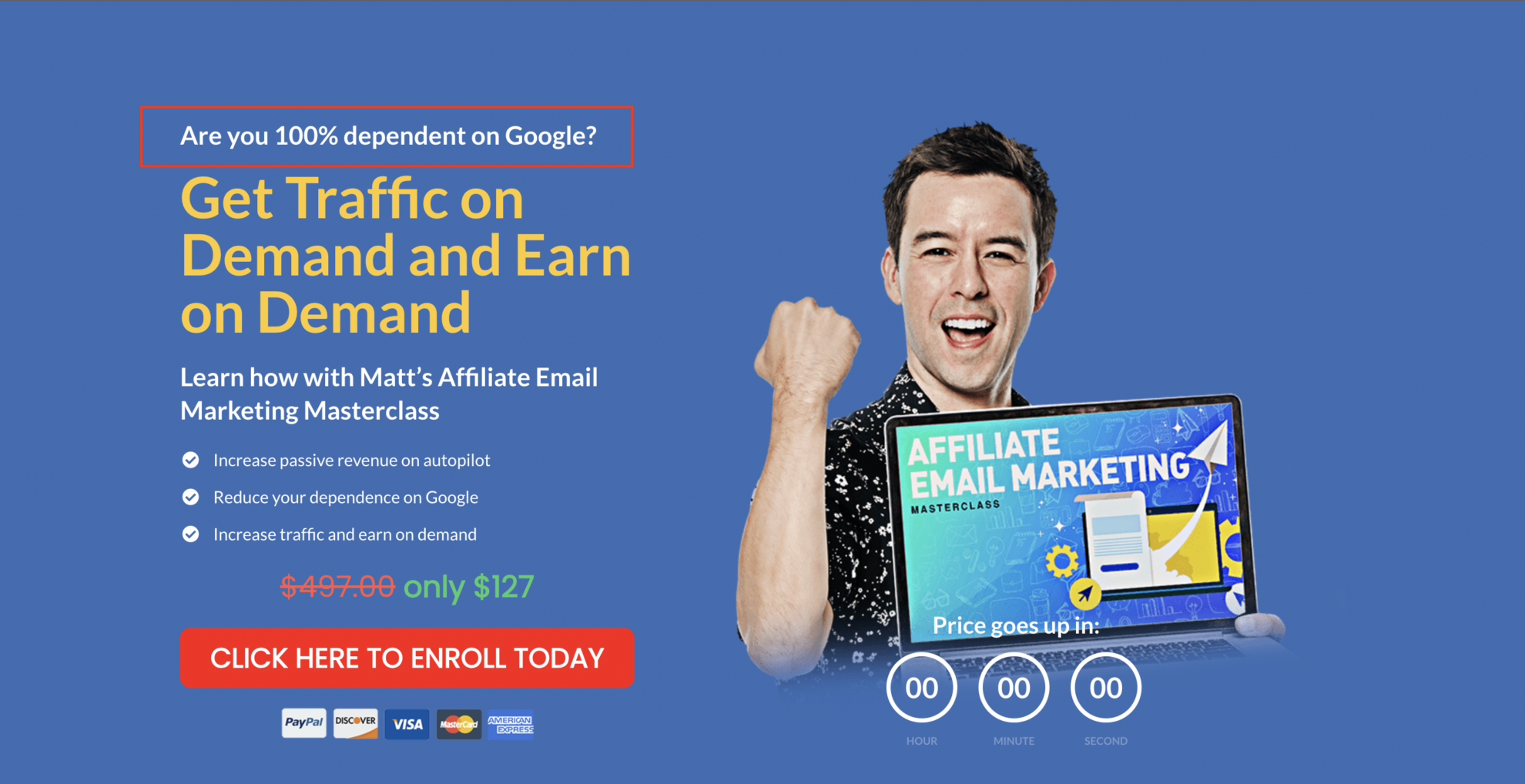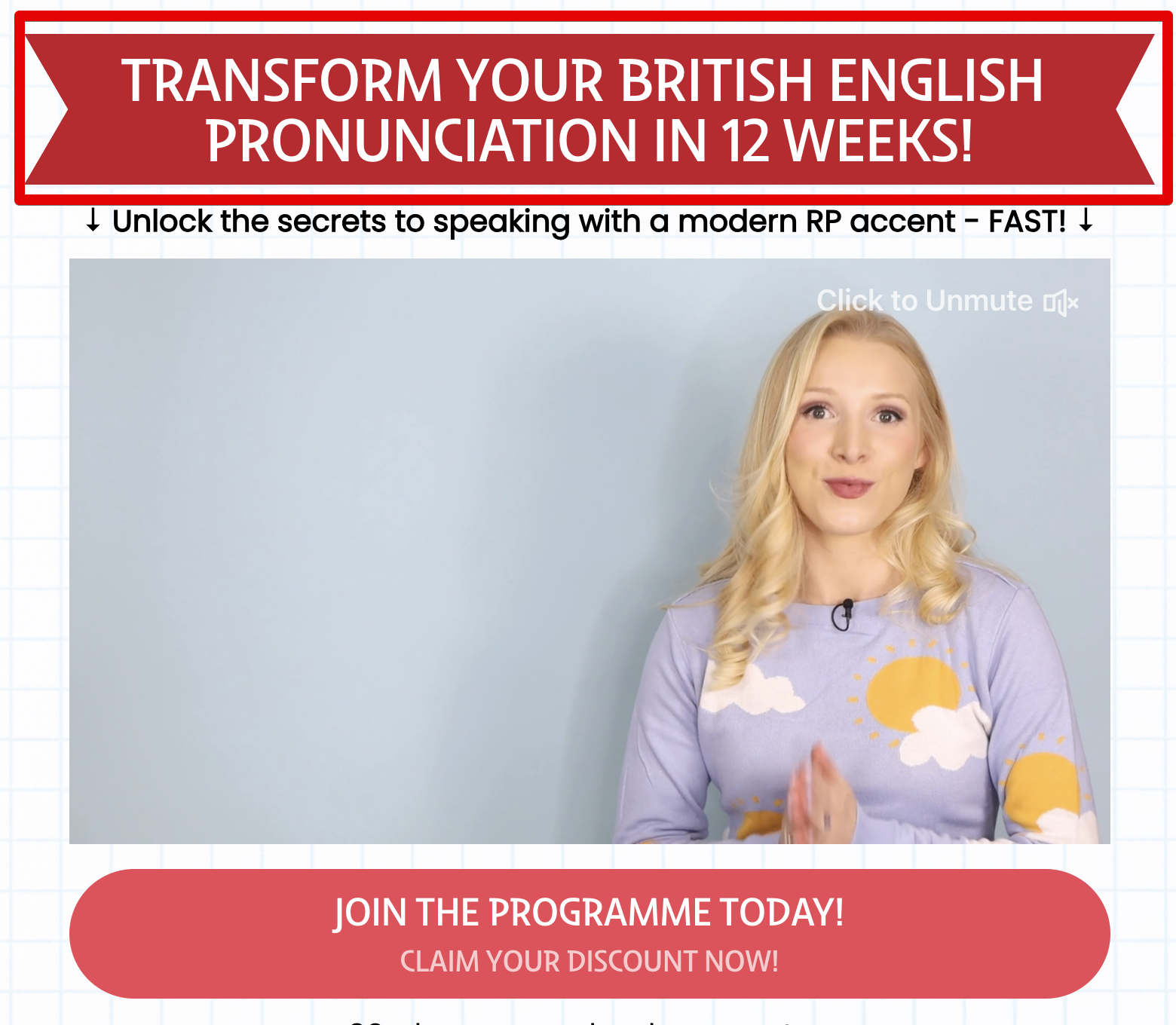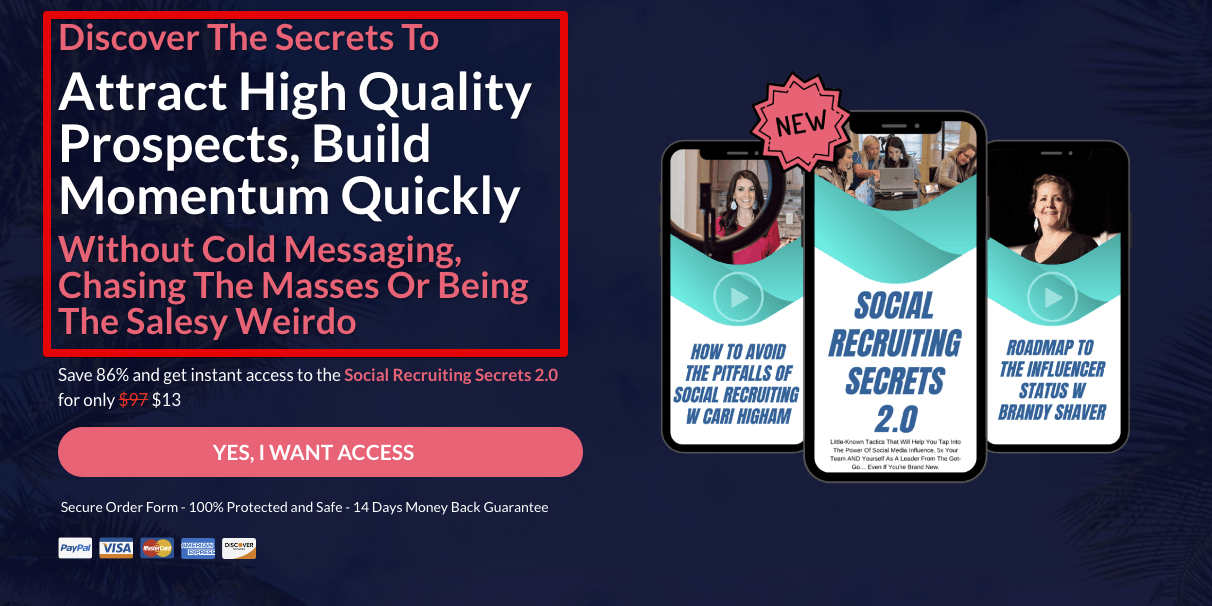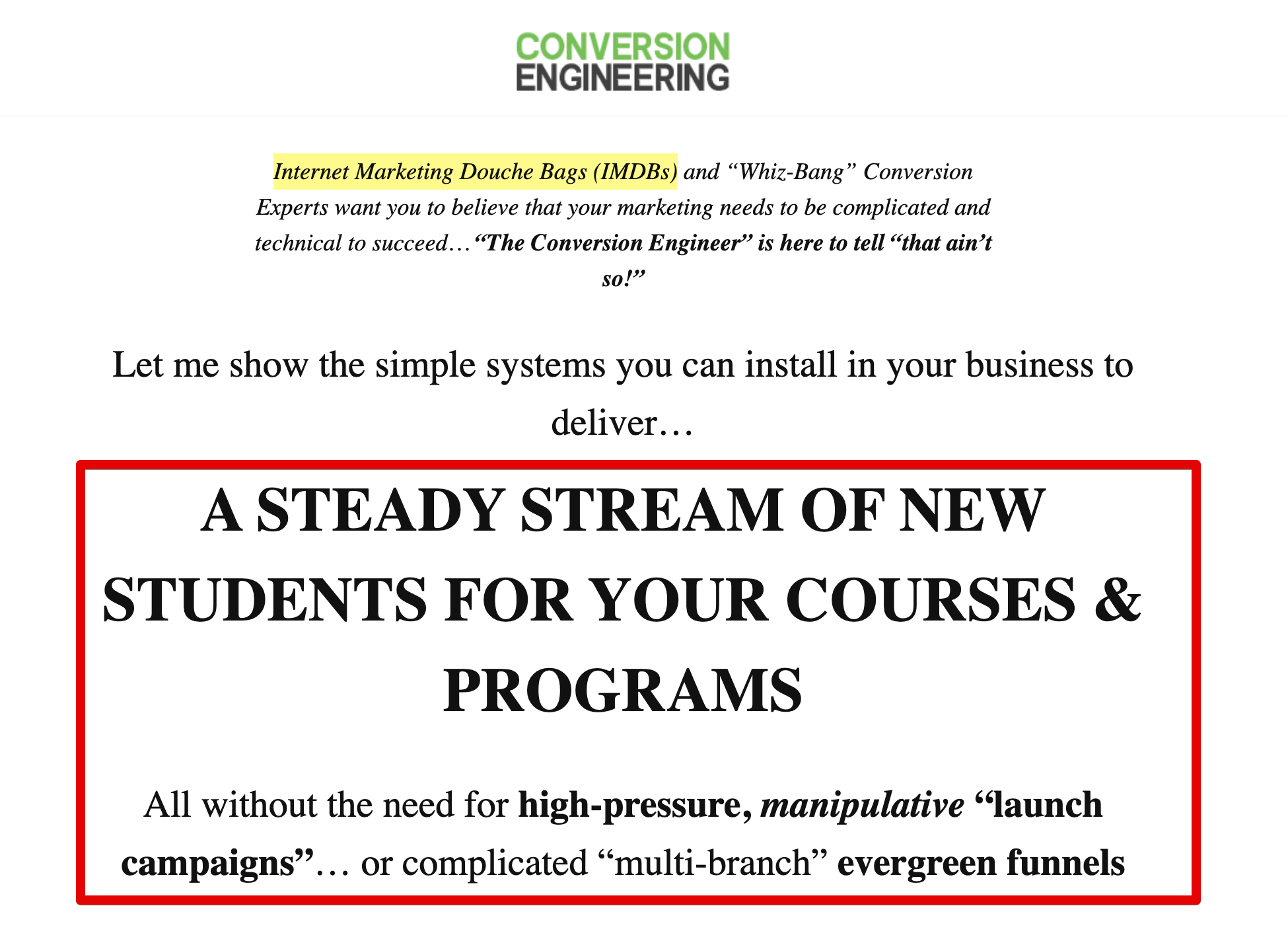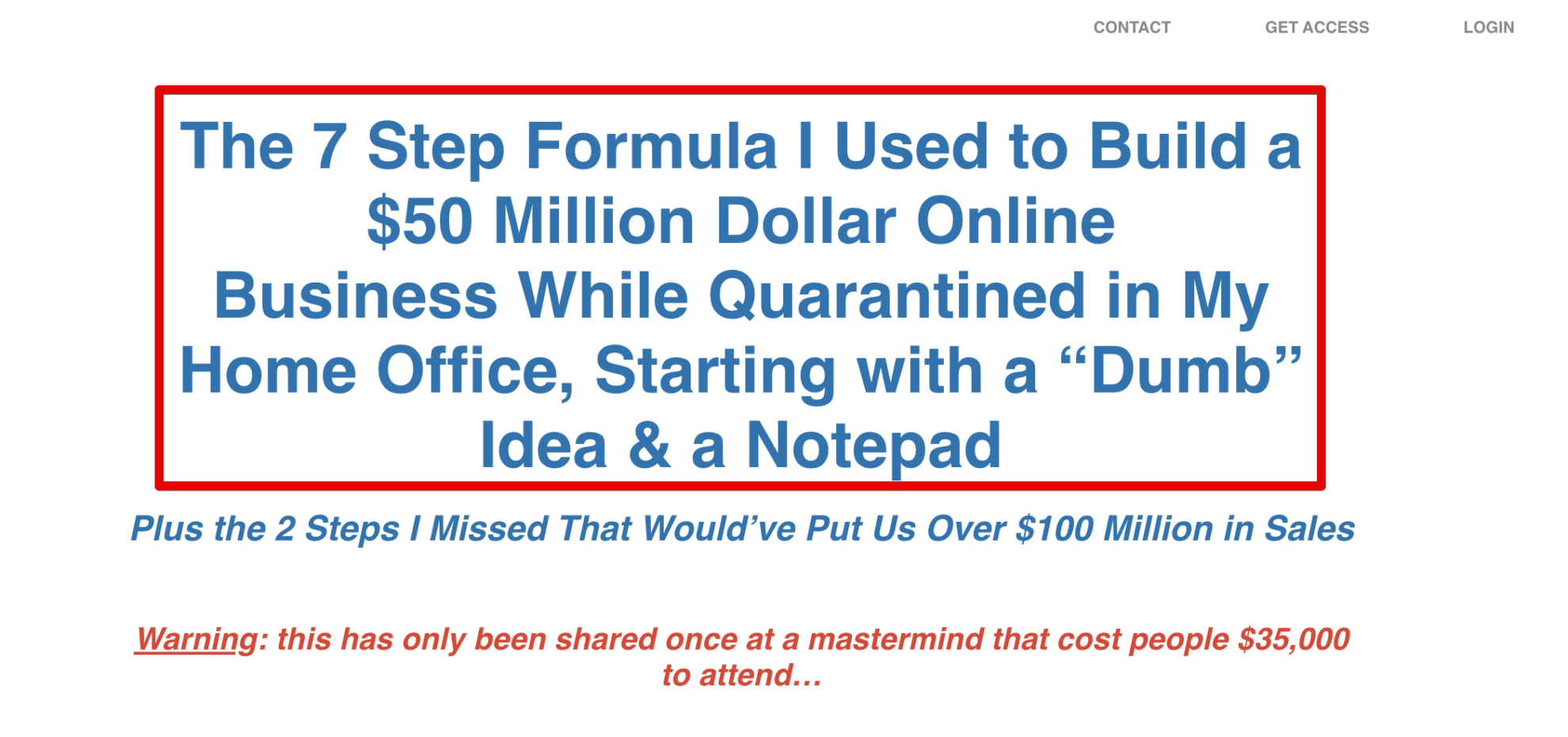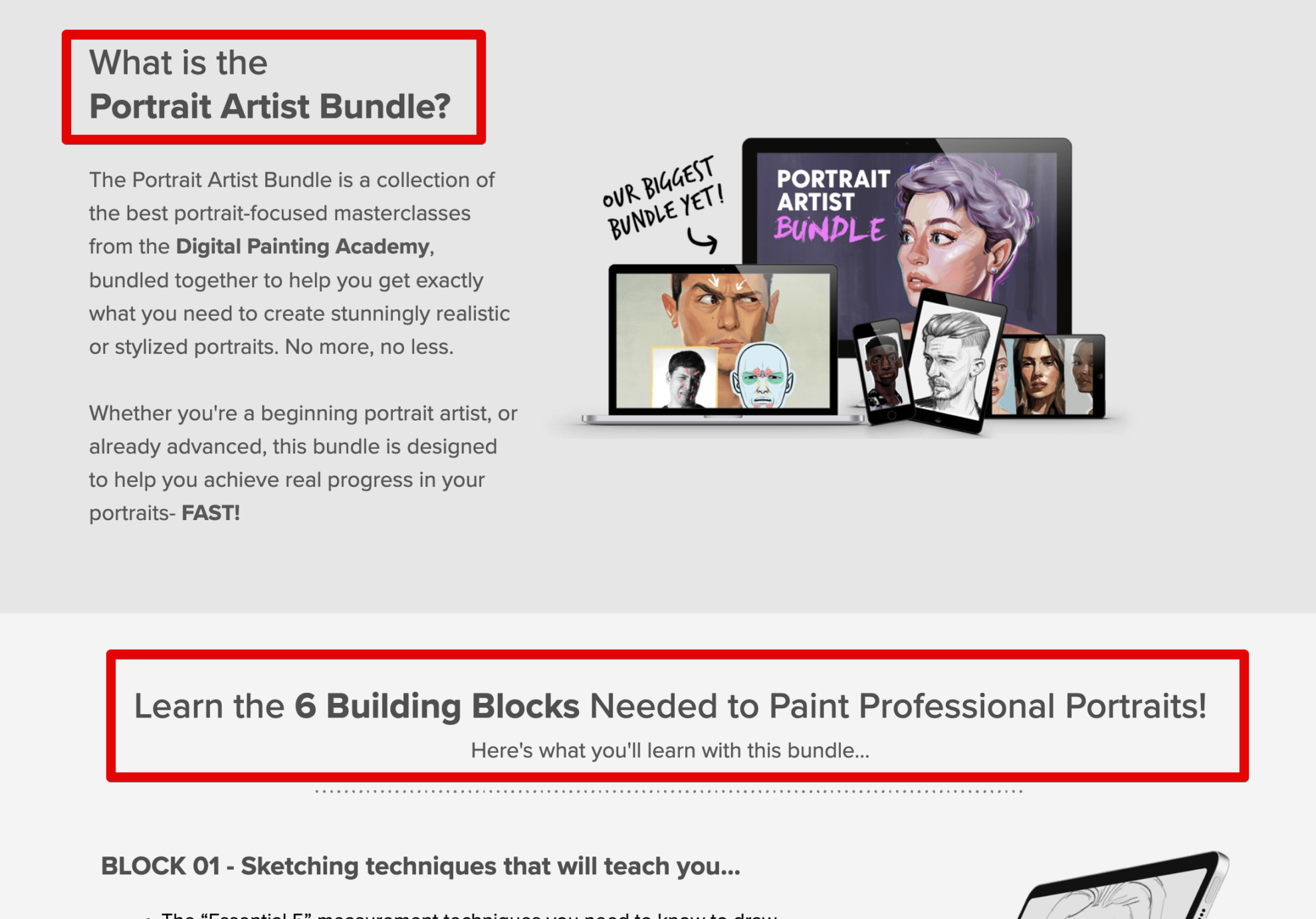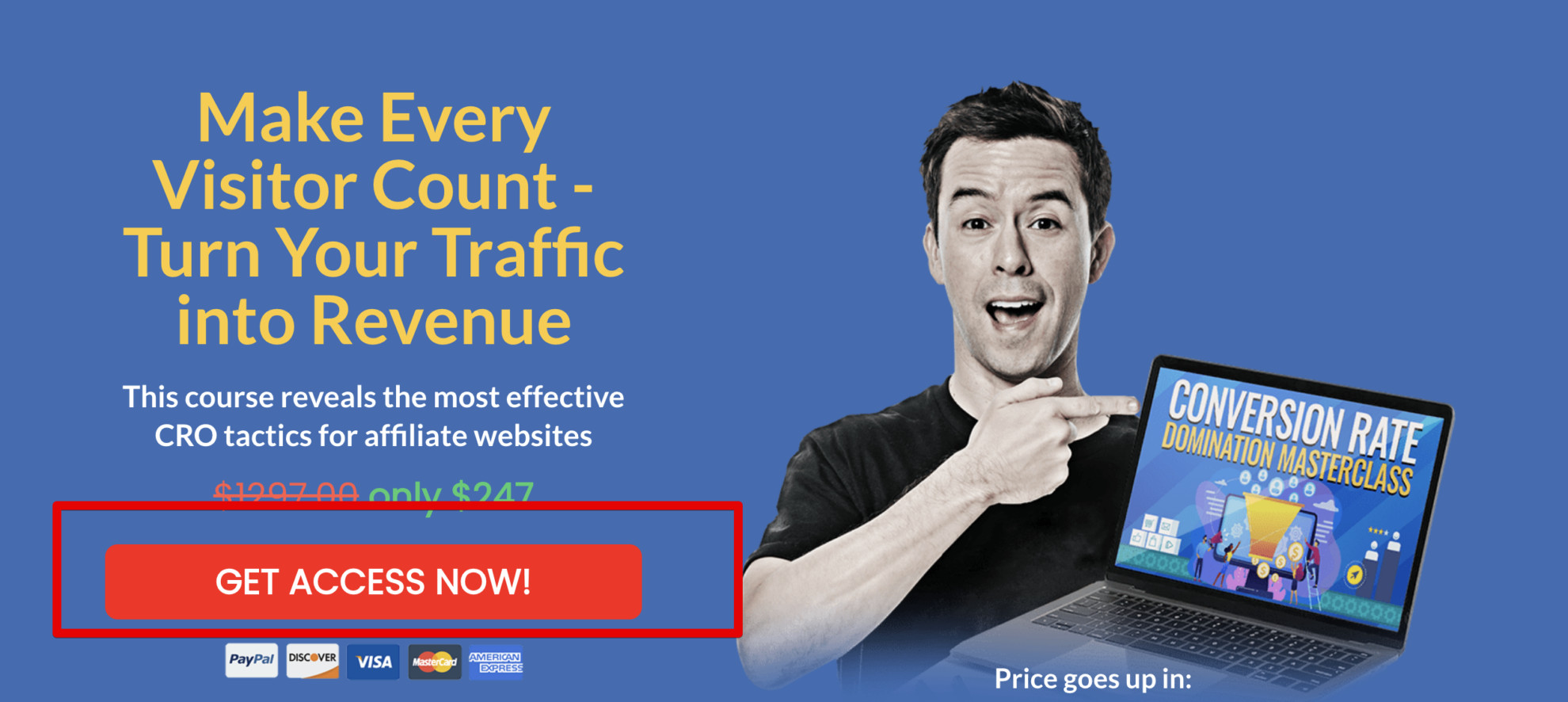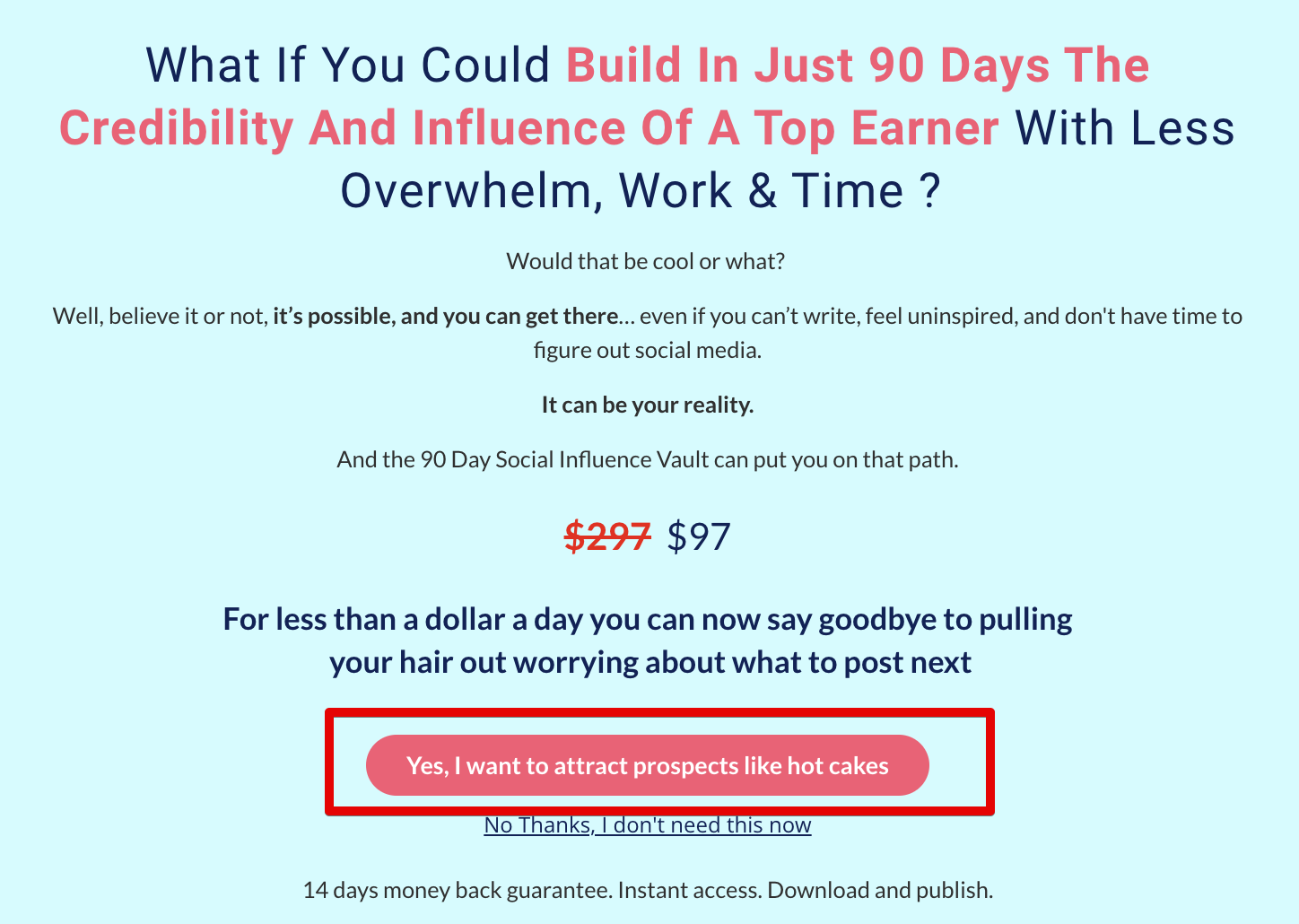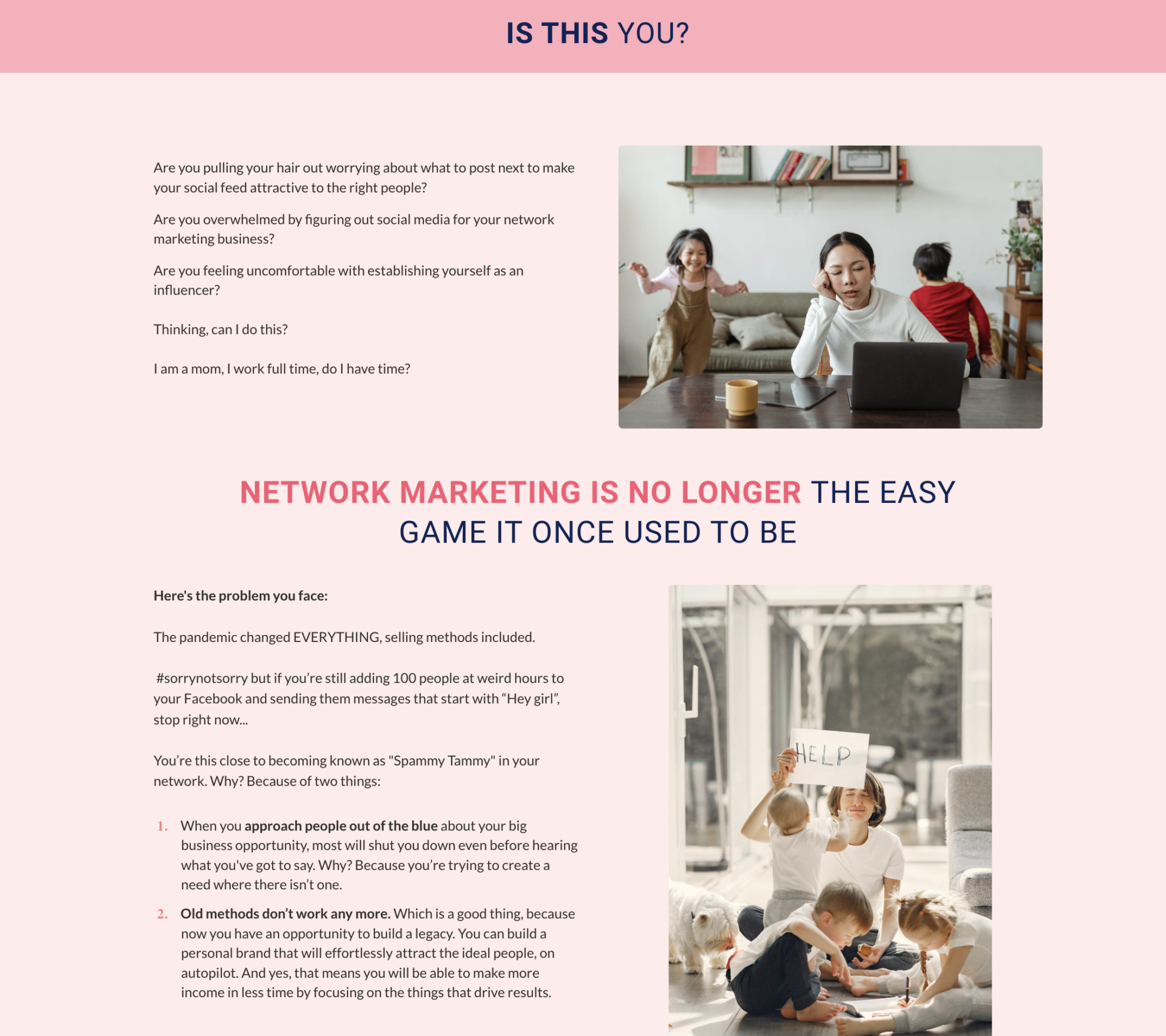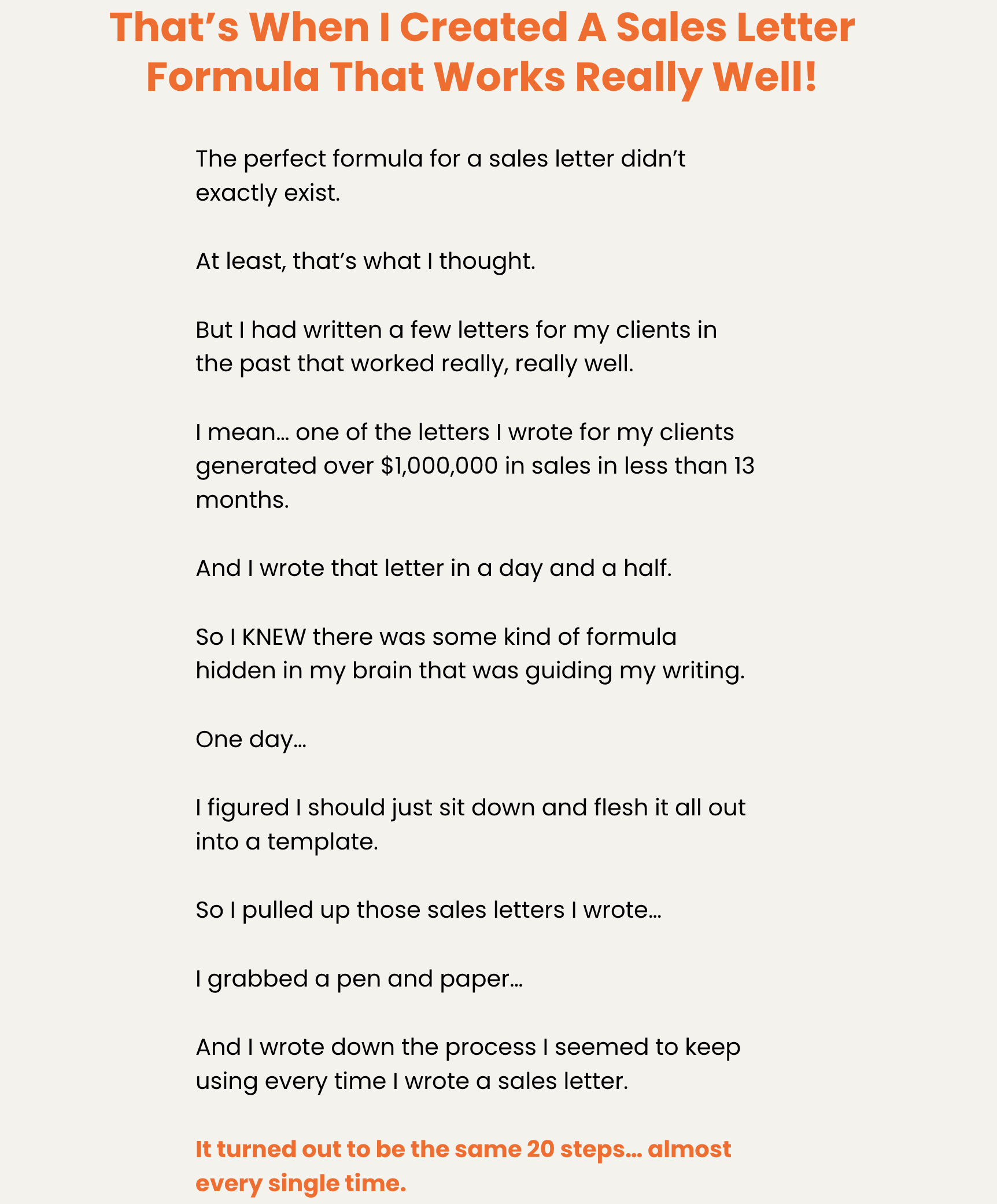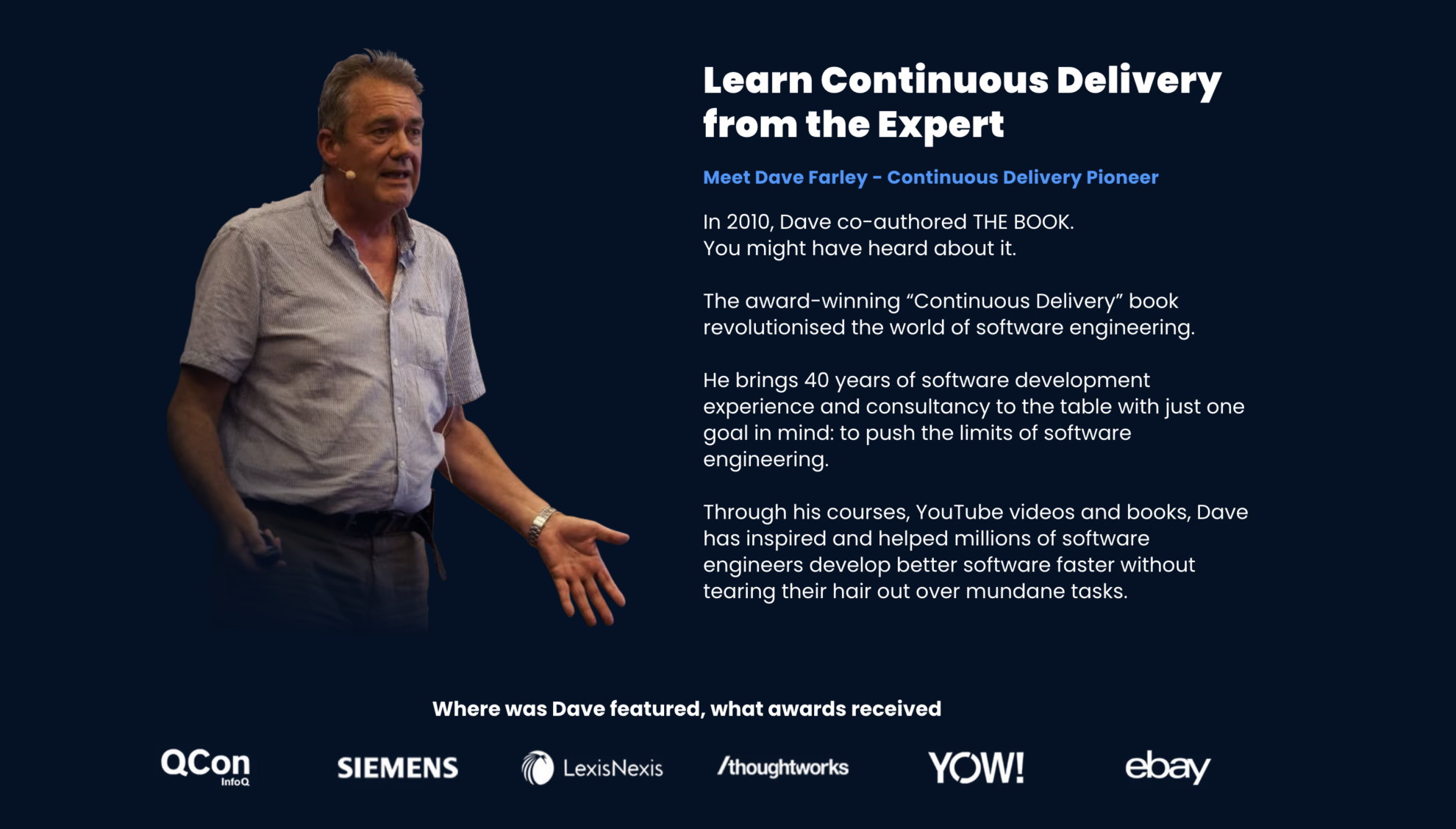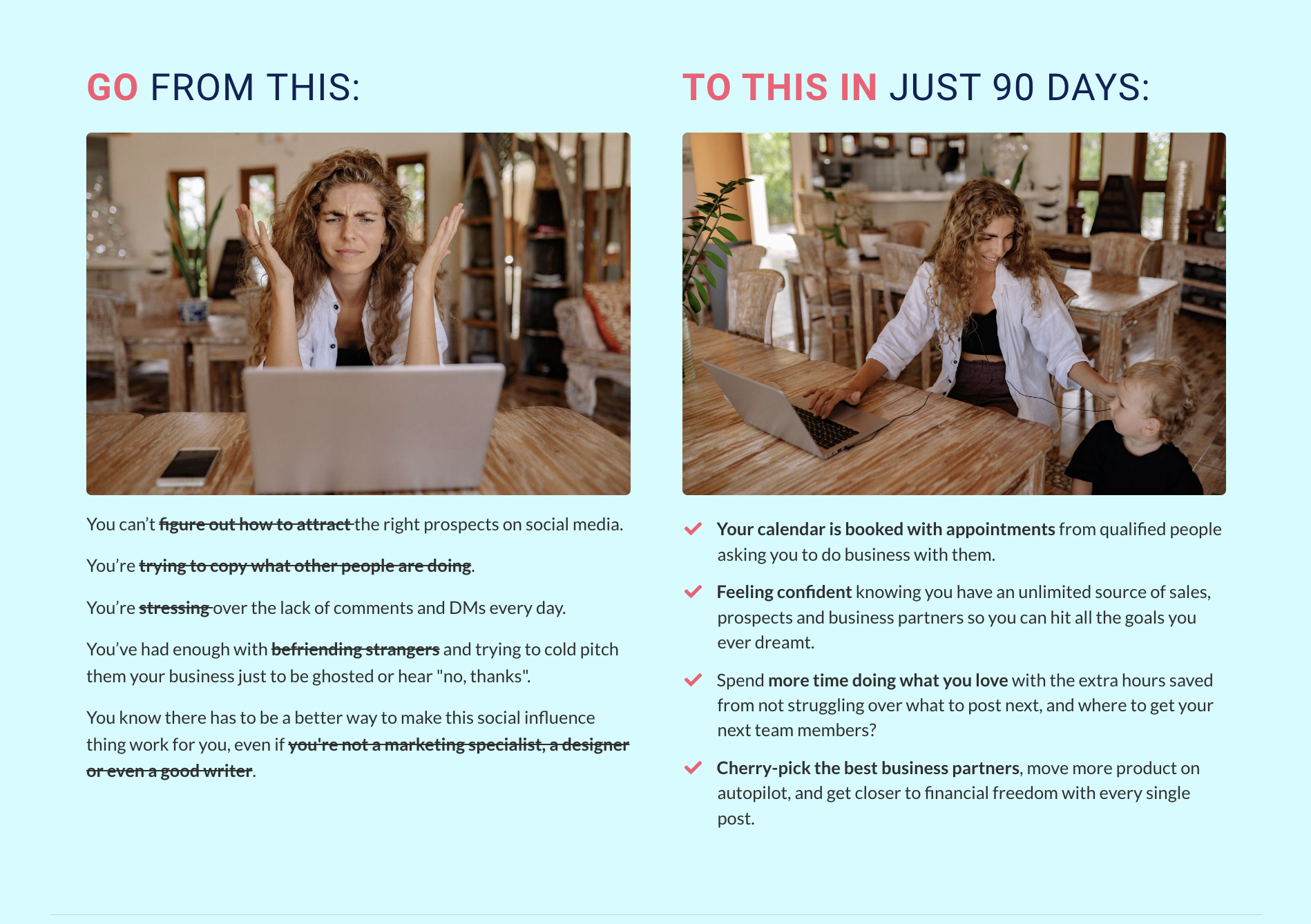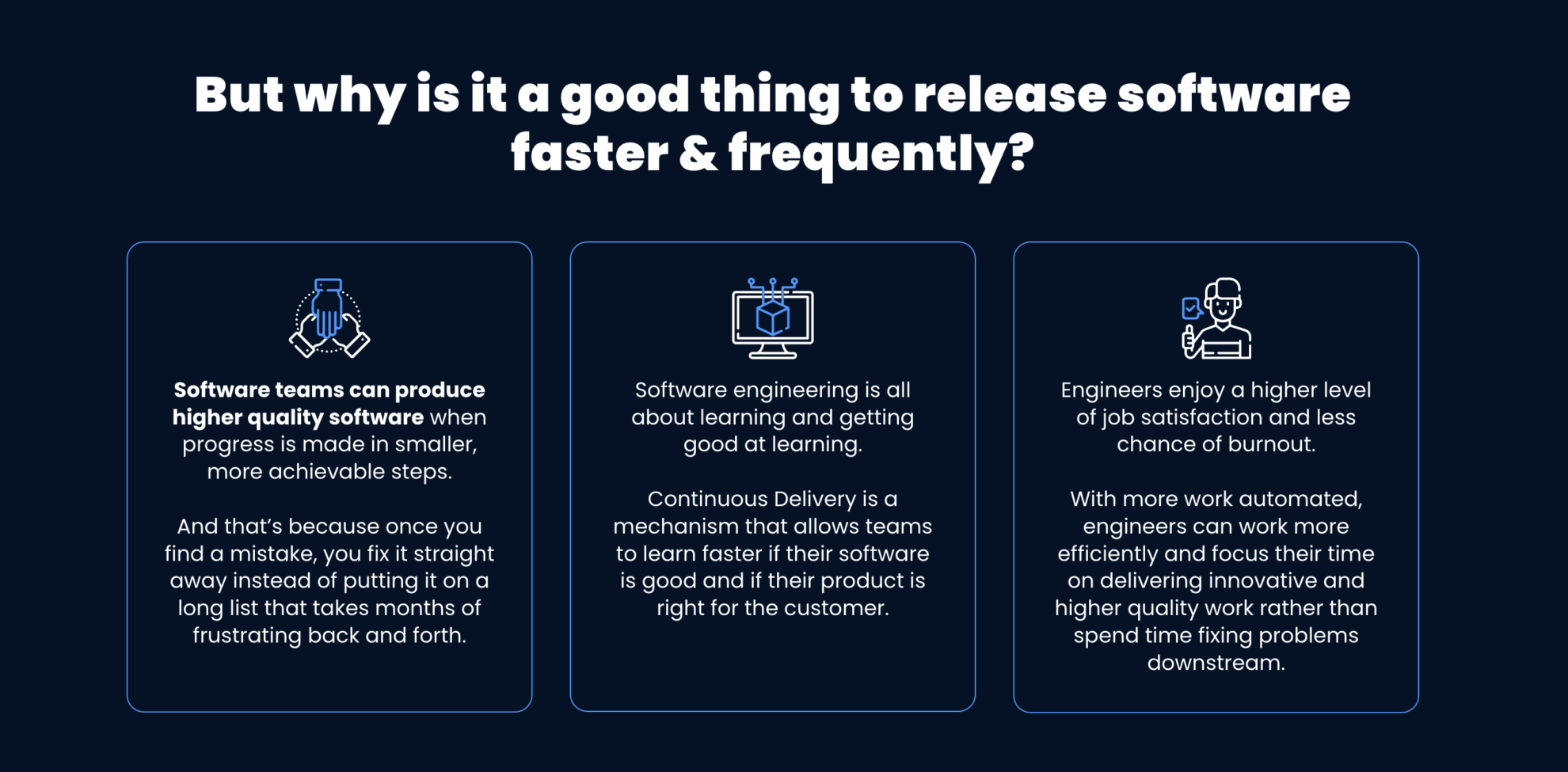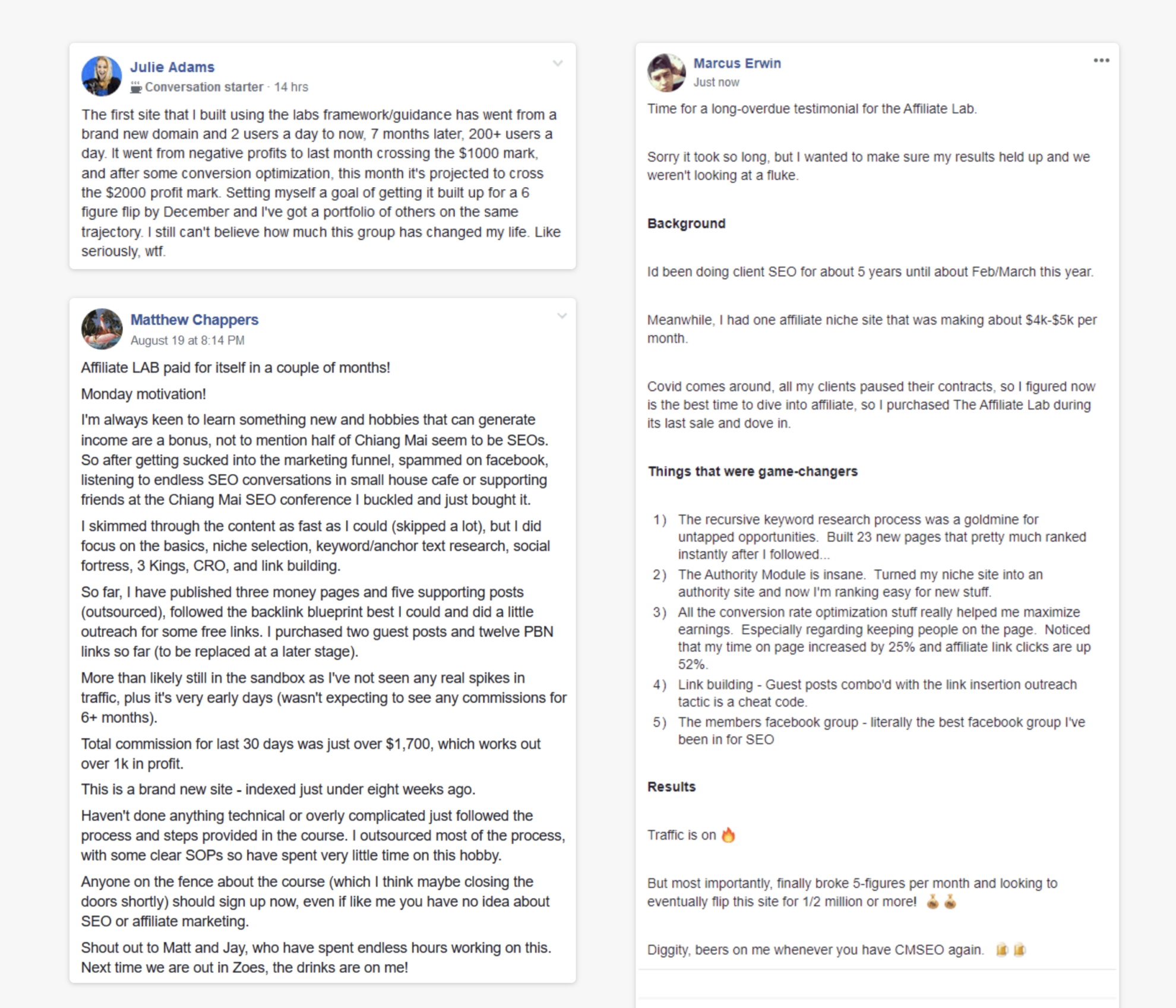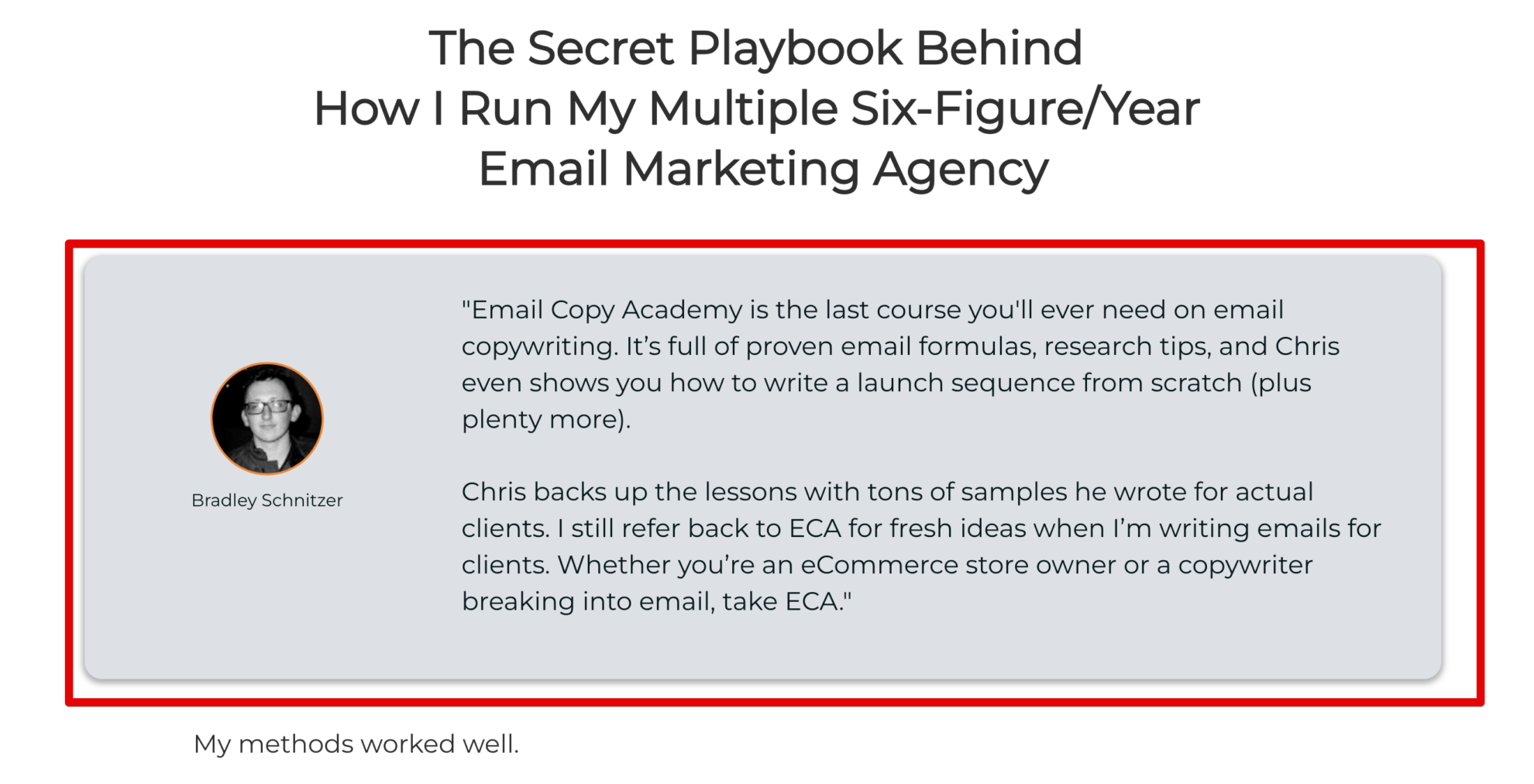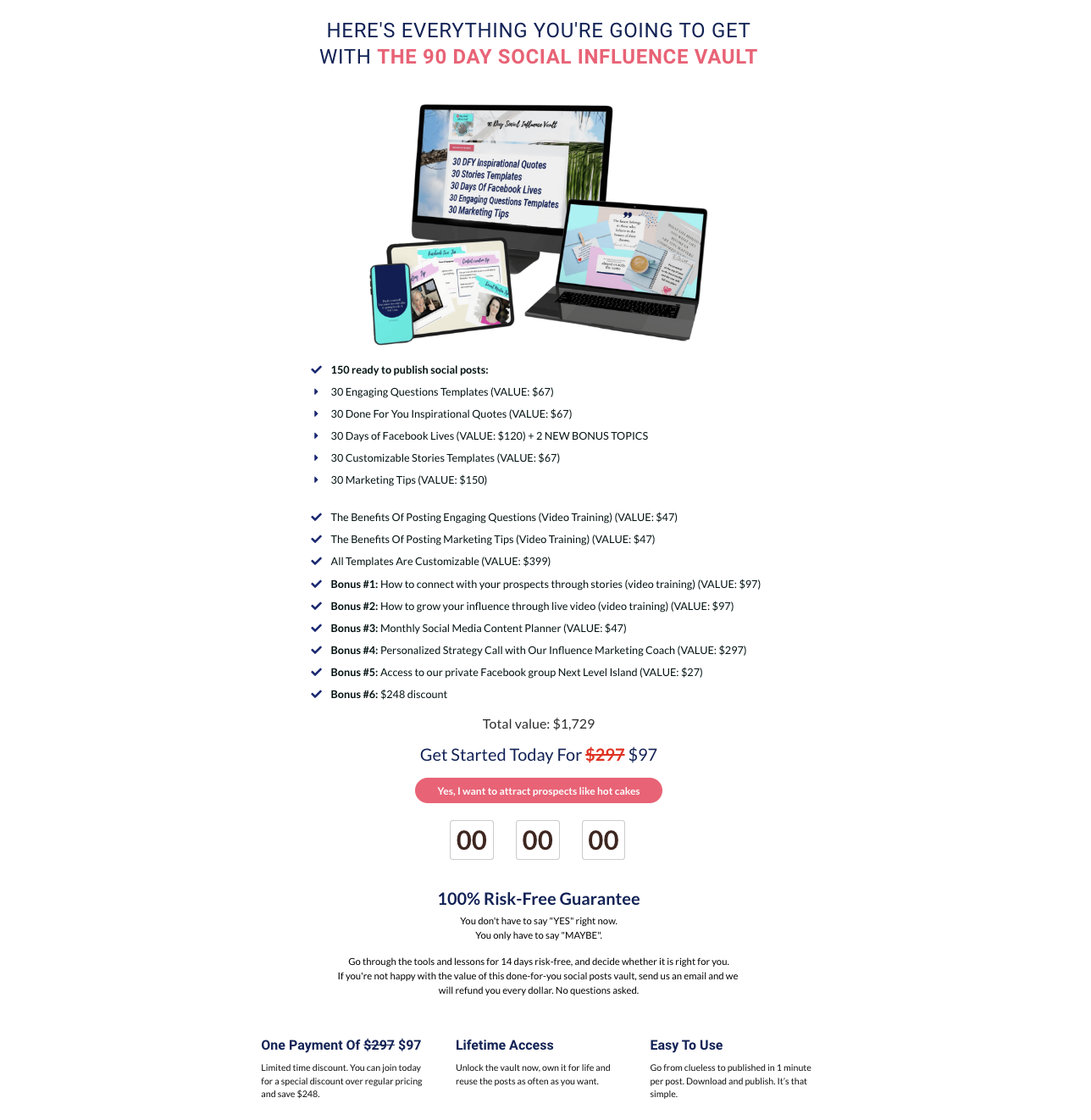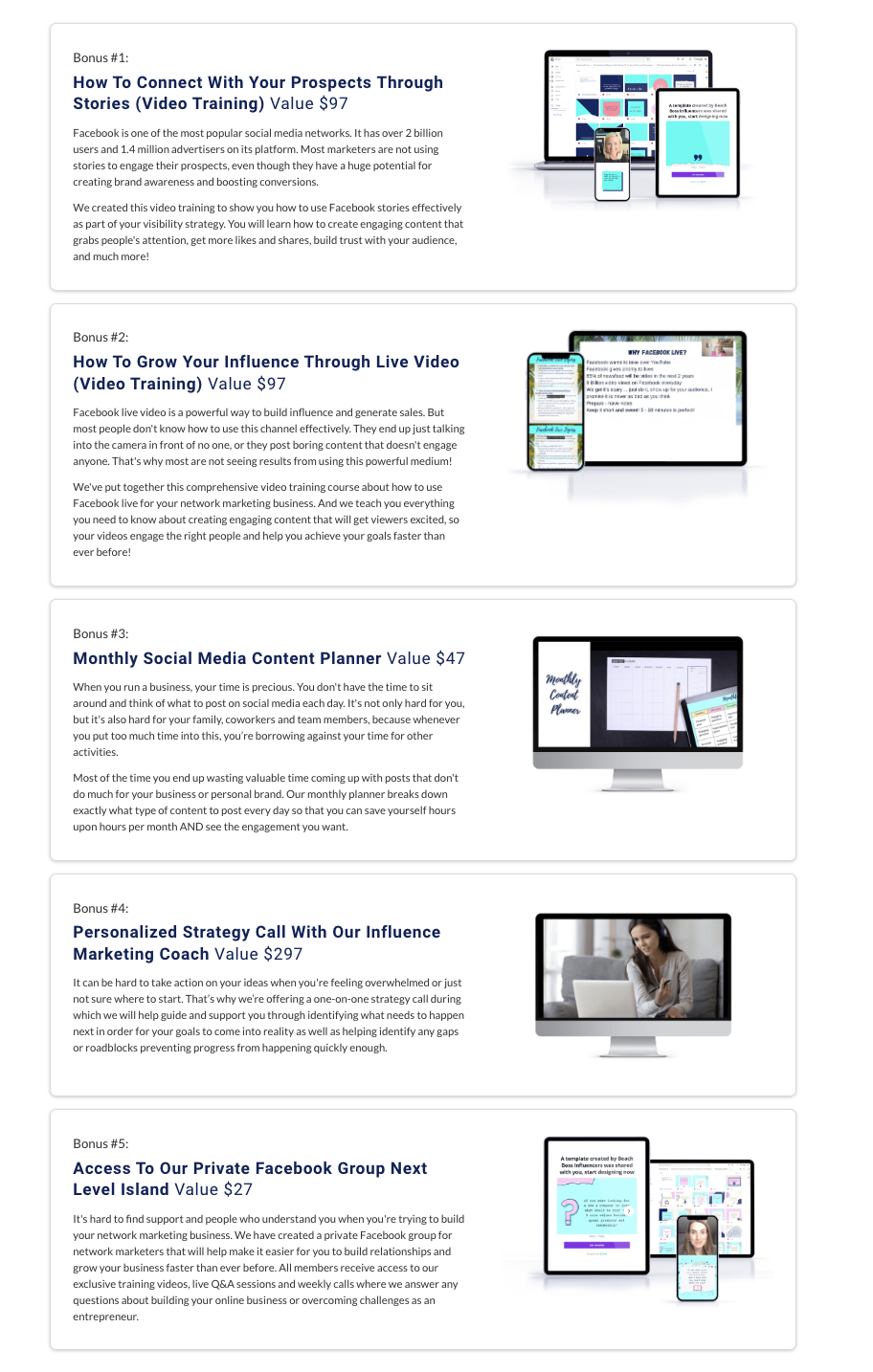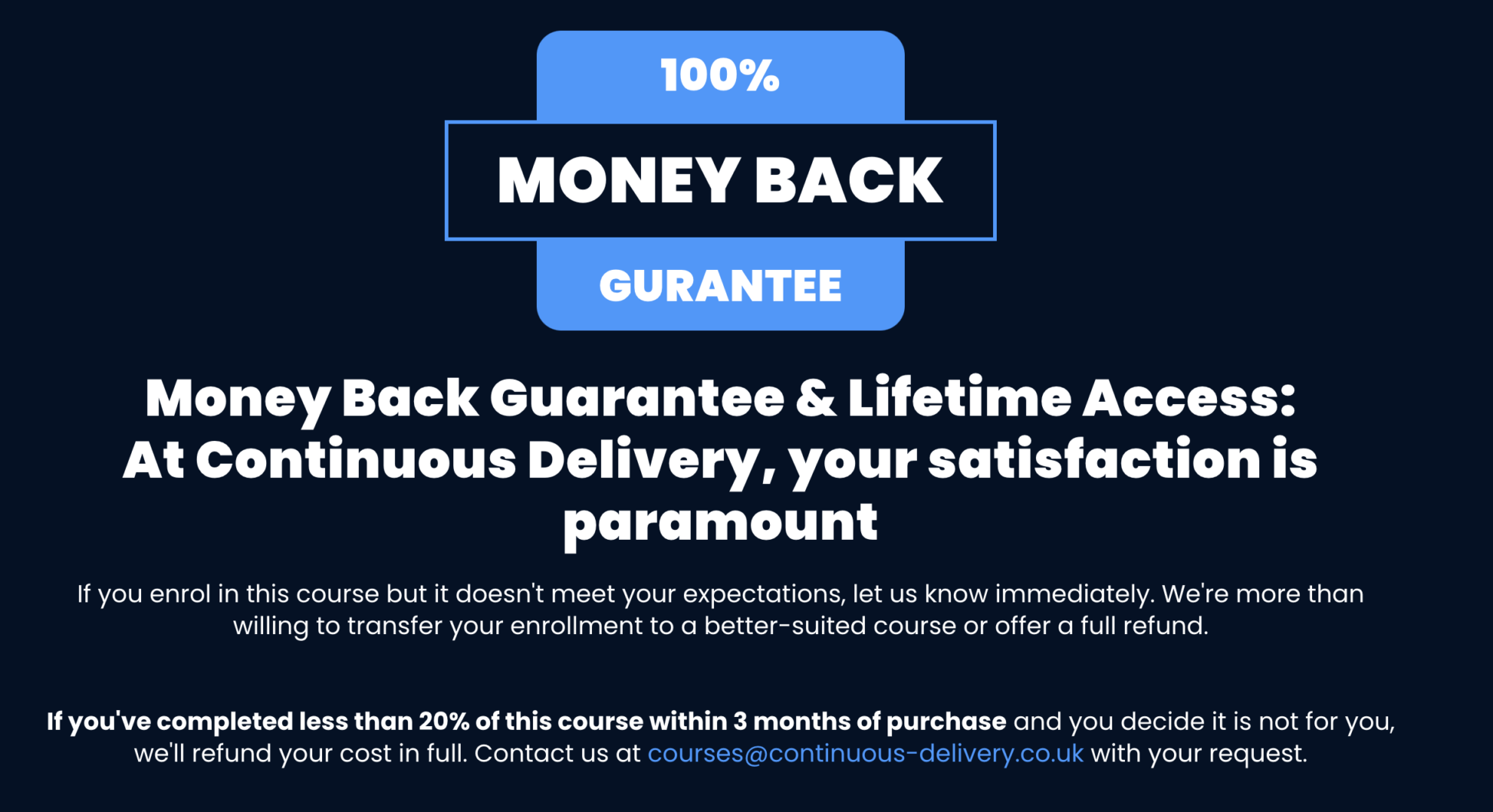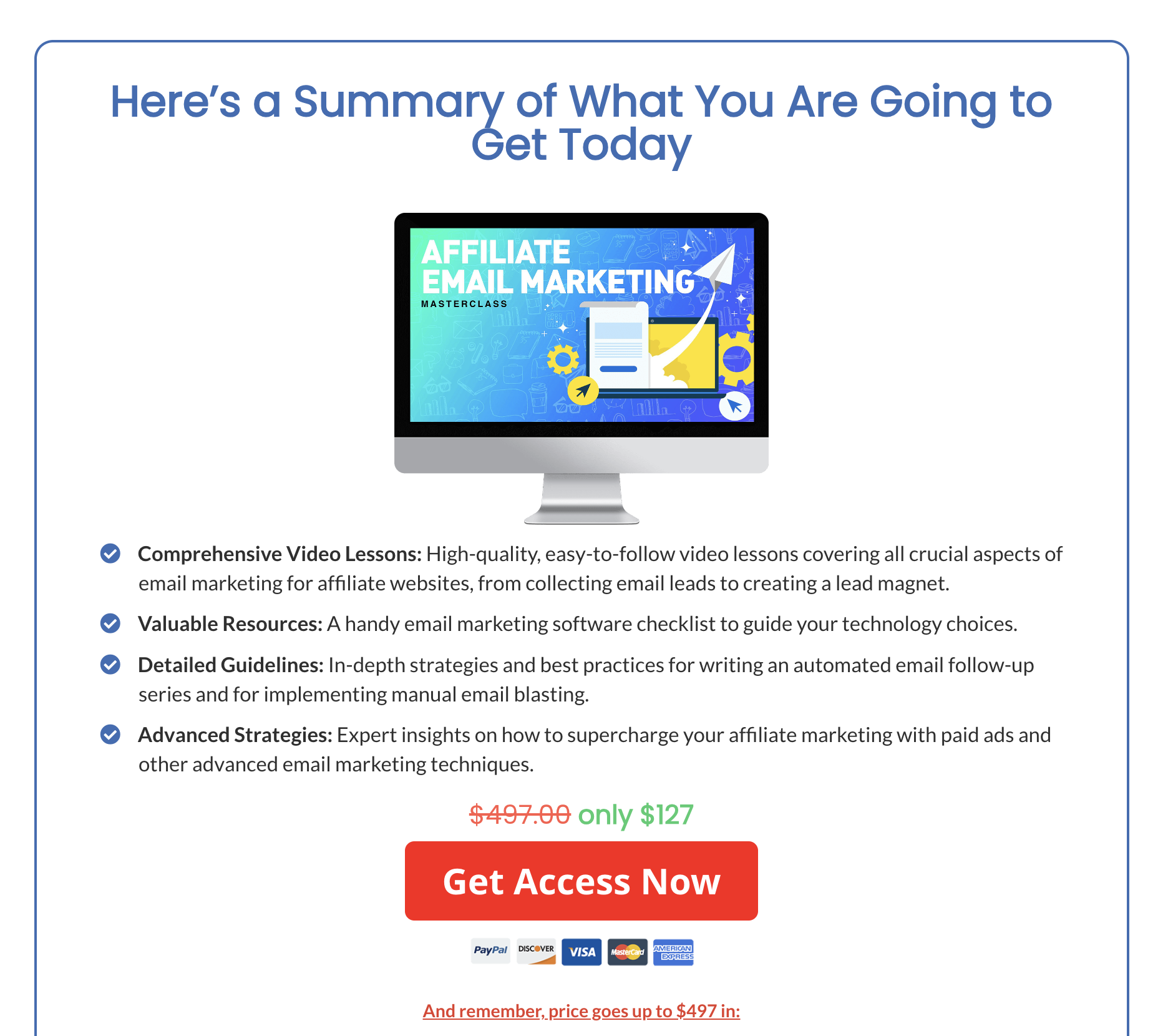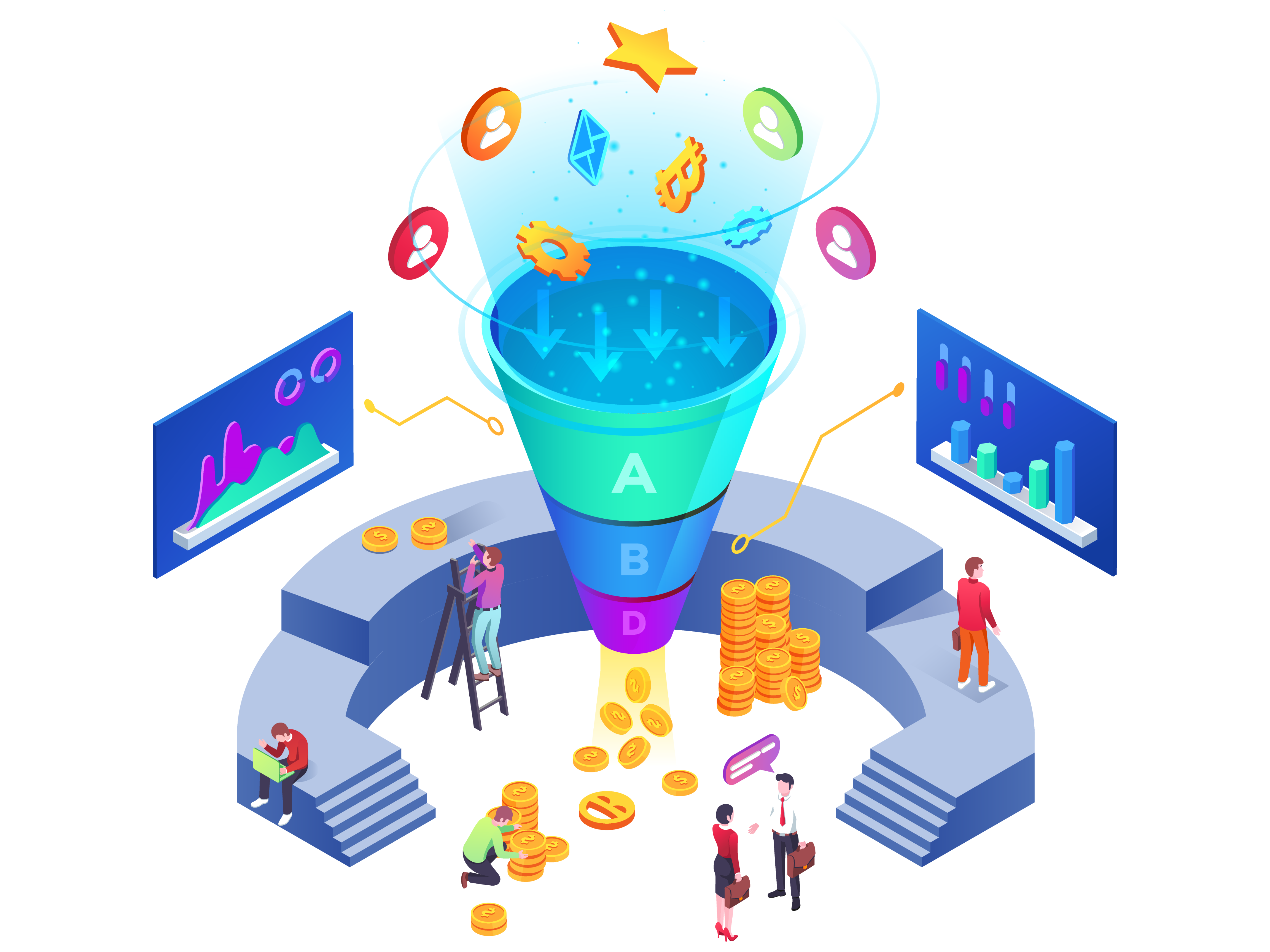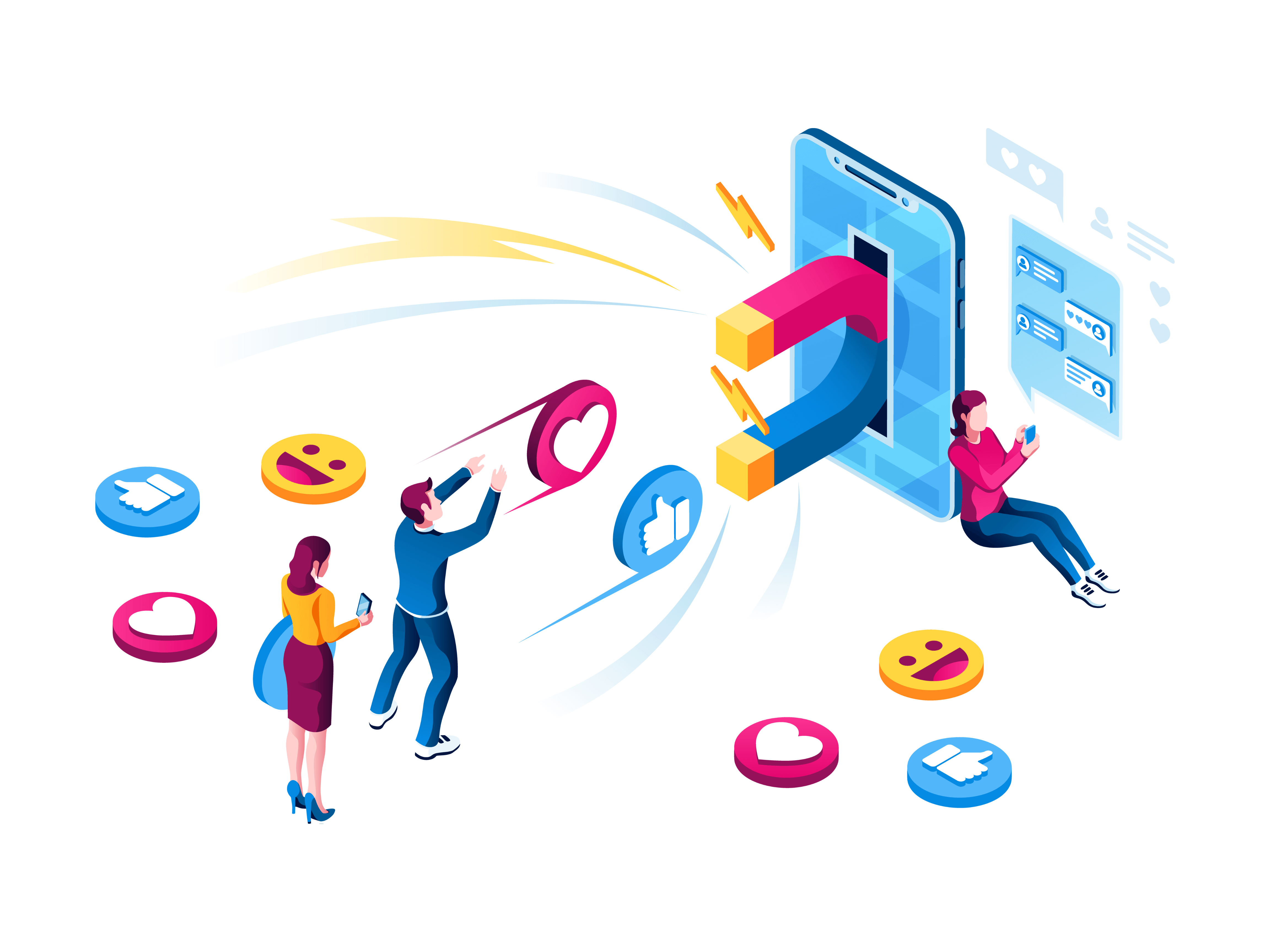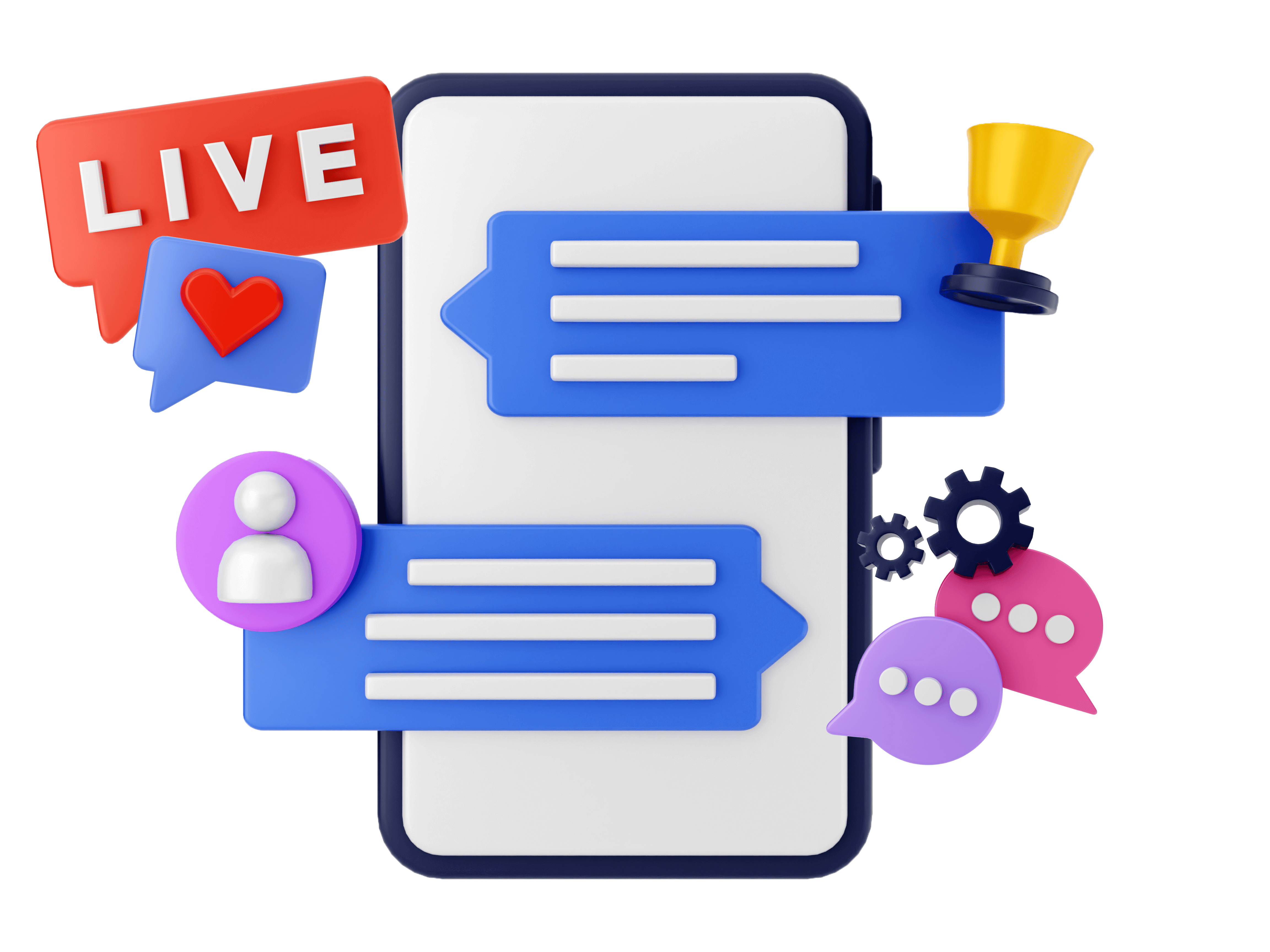Writing a full sales page for your online course can be super intimidating. I mean, all you have to do to create your course’s sales page is sit down and write a few thousand words that tell your potential students everything they need to know about your course while convincing them to buy. How hard is that?
Coming from a professional copywriter who has written dozens upon dozens of course sales pages… it can be hard, REALLY hard…
… depending on how you approach it.
The most important thing I ever learned about writing sales pages is this:
“Great sales pages are NOT written, they are constructed.”
What this means is that you don’t have to, and you shouldn’t, wing it when you’re writing your sales page.
Even professional copywriters start with a framework.
Also, building your page one piece at a time is a LOT easier than trying to type out the whole thing in a single burst.
To help you create high-converting sales page using a proven step-by-step process, I am going to reveal the 15-part framework behind every sales page we develop for our clients and students.
In this post, we’ll cover:
- The 15 critical elements in our proven course sales page framework
- Dozens of in-the-wild examples from high-converting course sales pages
- How to track, test, and optimize your course’s sales page
Follow along, check out the examples, and see how your course’s sales page compares to our proven framework.
What is an Online Course Sales Page?
An online course sales page is the page on your site that is dedicated to telling your visitors every detail they need to know about your course to make a purchase.
The goal of this page is to effectively communicate the value of the course and entice visitors to become paying students.
Importance of a well-crafted sales page
When it comes to selling your online course, a well-crafted sales page is absolutely crucial. It serves as the virtual storefront for your course, enticing potential students to take the next step and enroll. A poorly designed or ineffective sales page can lead to missed opportunities and low conversion rates. On the other hand, a well-optimized and persuasive sales page can attract and convert visitors into paying students.
The 15 Elements of a High-Converting Online Course Sales Page
To create an effective online course sales page, you need to incorporate various elements that capture the attention of your audience and convince them of the value of your course.
Through hundreds of tests, Data Driven Marketing has identified 15 key elements that are vital to the success of a course sales page.
Your page doesn’t have to incorporate all 15 elements to sell well. And some of these elements are more important than others.
But the bottom line is the more of these elements you can include on your course’s sales page, the better it’s likely to perform.
Here are 15 elements in our high-converting course sales page framework, from the top of the page down:
Call out your audience: Who do you help? Call them out!
By addressing your target audience directly and acknowledging their specific challenges or desires, you immediately establish a connection.
Not only that, you engage your audience on a personal level. You make it clear that they are exactly who you created your course for, and therefore what you have to share with them in your sales page is worthy of their attention.
There are a few different ways you can call out your audience.
You can call them out using an egoic label. An egoic label is a fancy name for how people identify themselves. For example: doctor, lawyer, or entrepreneur.
Or, in the case of the example below, a digital artist.
Another way to call out your audience is to identify them in terms of the problem or common struggle your course will help them solve:
The third common way to call out your audience is to tell them why it’s of urgent importance that they pay attention to your sales page.

Audience call-outs are most often placed at the very top of the sales page.
But if you find that your call-out doesn’t fit right at the top of your page, you can call-out your audience in other places throughout your sales page.
Utilizing a Compelling Headline
Your headline is where you convey the main benefit or promise of your course. It should make visitors curious and eager to learn more. Remember, a compelling headline is like a magnet that draws people in.
There are a number of different copywriting techniques you can use to write a compelling headline.
The Promise Timeline Headline
The most common and straightforward headline technique in course marketing is what I call the Promise Timeline. To use this approach, you simply state the outcome your course delivers, and how long it takes to happen.
The Promise Without Pain Headline
A slightly more advanced yet also popular headline technique for courses is what I refer to as the Promise Without Pain. To use this technique, state the promise of your course. Then, add a clause to your headline that removes a common or frustrating pain your prospect typically has to go through to get the outcome your course delivers.
The Unique Mechanism Headline
If the promise of your course is one that your prospect has already heard a hundred times over…
…you can cut through that noise, and ignite their interest using a unique mechanism headline.

When you use the Unique Mechanism approach, you highlight the secret sauce that makes your training different and better in your headline.
The Story Headline
Finally, you have my favorite approach to writing sales page headlines, the story headline.
Typically, if you use a story-based headline, it will also include elements of the other headline formulas I referenced.
Scroll-Stopping Subheadlines
There are three types of people who visit your sales page. Fast action buyers. These people are ready to sign up. All they need is an offer and a call-to-action button.
Then you have skimmers and readers. The skimmers and readers make up the majority of your audience.
To hold these people’s interest, you want to break up your sales page with subheadings that captivate attention and highlight the key points.
The secret behind eye-catching subheadlines
One of the secrets to creating scroll-stopping sub-headlines is to NOT write them when you create the first draft of your sales page.
Instead, construct your sales page using the building blocks in this framework.
Then after you have a draft of your sales page, give each section a clear subheadline.
There are different approaches you can use to make your subheads eye-catching and intriguing.
You can simply call out why your prospect should read that section of your page.
This approach to writing subheadlines is similar to the way you write a blog post. Remember your readers, a.k.a. your prospects, wouldn’t have scrolled below the fold if they weren’t interested in your course. Use your subheads to tell them where they can find the information they need to know.
The other approach to writing subheads, the one many copywriters favor, is to look for the most eye-catching lines in the initial draft of your sales page. And then turn that text into subheads.
I call this approach the showstopper technique. Because all you are doing is emphasizing the most interesting or exciting parts of your sales page.
Both approaches, creating descriptive subheads for each section and using the showstopper technique, work well.
And, you can use both techniques together to create subheads to keep your readers’ attention all the way to your main call-to-action.
Speaking of call-to-actions…
Clear Call-to-Action Buttons
On your sales page, your call-to-action (CTA) is the prompt your visitor uses to add your course to their cart.
Placing CTA buttons strategically and clearly throughout your page is critical to converting visitors into buyers.
After all, it doesn’t matter how good your copy is, if your visitor can’t see how to buy your course, you’ll lose sales.
You want to place a call-to-action button above the fold on the first screen of your sales page to capture fast action takers.
After that, a good rule of thumb is to incorporate call-to-action buttons every 600 to 800 words.
And another one at the very bottom of your page.
The design and color contrast of your CTA button can help them stand out from the rest of your page.
And so will using creative copy.
For instance, instead of using the typical “buy now” or “give me access,” you can also try using CTA that says “Yes, I want [fill in the desired outcome of your prospect here]”
Problem, Agitation, Solution Story
In the opening few lines of your sales page, you want to create what’s called the greased slide effect.
What this means is that the first sentence is so good that your prospects can’t help but read the next sentence. The same with the next sentence, and so on and so on, until your prospect is several paragraphs down the page without even realizing it.
The most common technique used in course marketing to create that greased slide effect is the problem-agitate-solution (PAS) story.
As the name would suggest, a problem-agitate-solution-story has three parts.
- You start by empathizing with and calling out the prospect’s problem.
- Then you detail the frustrations that the problem causes.
- Finally, you share how your course can solve this problem and how good that outcome will feel.
Using this storytelling technique helps create an emotional connection with your reader.
Showing them you understand their problem inspires trust. And leading from the problem to the solution helps them visualize how your course can transform their life for the better.
You can write your PAS story in the second person. If you write in the second person, your reader is the protagonist in your PAS story.
The example below shows the opening of a PAS story written in the second person:
If you struggle to write in the second person, it can be just as powerful to tell your PAS story as a first-person experience.
Many course creators develop their courses because they’ve lived the problem their prospect is trying to overcome. The methods in their course are the solution they discovered to overcoming that problem.
If that’s the case for you, then telling your PAS story in the first person is a powerful way to bond with your prospect.
This example shows part of a PAS story, the solution, written in the first person.
Meet Your Instructor — Show Your Credentials
When selling your course, the who is as important as the how… meaning your prospects need to know who you are and why you are qualified to teach them.
So make sure your sales page features your credentials, expertise, and any relevant achievements that showcase your authority in the subject matter.
People are more likely to enroll in a course when they feel confident in the instructor’s expertise.
Futurecasting – What Will Life Be Like After Your Course?
Most people don’t buy a course just for the experience of learning. They buy it to get an outcome. They want to solve a problem or achieve a goal.
On your sales page, it’s important to paint a vivid picture of what your students’ lives will be like after completing your course.
Help them envision the transformation and benefits they will experience.
By doing so, you create a sense of anticipation and a desire to enroll in your course.
Showcasing the Benefits and Value
Showcasing benefits is related to futurecasting, but it’s also different.
When you show benefits, you want to highlight the specific outcomes your course will deliver.
Show how your course will solve your prospect’s problems.
Identify the skills they will gain and the goals they can expect to achieve, and connect each of those outcomes to a benefit.
Incorporating Social Proof and Testimonials
Testimonials are a show of proof.
If your prospect can see that people like them have achieved the outcome they want, it will increase their desire for your course.
You can use your testimonials in a number of different ways on your sales page.
You can have a dedicated section where you show off all the glowing reviews and comments about your course.
You can use testimonials throughout your sales page to back up claims.
And you can use them to show others that people they admire and aspire to be like have taken your course.
Offer in Detail – Make Sure Your Offer is Clear by Showing Them Everything That Comes with Your Course
It is always important to show a prospect what they are going to get for their money.
But with courses, it’s especially important because, unlike with physical products, it is not always obvious what is included in your course package.
Provide a detailed breakdown of what your course includes. Highlight the modules, lessons, resources, and any additional materials or bonuses that students will receive. Be transparent and leave no room for doubt or uncertainty about the value they will gain.
Showing your prospect what’s in each part of your course will help them see how you are going to deliver the outcome or transformation they desire.
Bonuses – Feature and Explain Your Bonuses
Bonuses add a sense of increased value and excitement to your offer. They help your prospects feel like they are getting something extra when they sign up for your course.
Exclusive resources, additional lessons, or access to a supportive community can all make good bonuses.
The bottom line with bonuses is that offering them tends to improve conversion rates and increase sales.
Guarantees – Reverse Your Buyer’s Risk with a Straightforward Guarantee
Your guarantee is the biggest objection buster on your sales page. Its purpose is to reduce any anxiety your prospect has about committing their cash to your course.
The more straightforward you can make your guarantee, the more trust it will inspire.
Money-back guarantees do the most to reassure prospects that you have confidence in your course and that if the promise of the course is not met, there is a remedy.
Other types of guarantees can also work, as long as they show your prospect you will stand behind the promise of your course.
Close with a Reminder – Summarize the Offer and the Value of Your Course
In the closing section of your sales page, summarize the key points and reiterate the value of your course.
Remind your audience of the benefits, bonuses, and guarantees they will receive when they enroll. Reinforce the urgency to take action and seize the opportunity.
FAQ – Answer All Their Questions Before They Have to Ask Them
Your Frequently Asked Questions (FAQ) section is where you anticipate and address common questions or concerns your prospects may have.
In this section, you want to provide detailed answers that cover various aspects of your course, such as content, delivery, pricing, and support.
By proactively addressing these questions, you remove barriers and increase trust.
Scarcity/Urgency – Show Them Why it’s Important to Start Your Course Now
You can create a sense of urgency by highlighting scarcity or presenting a limited-time offer.
This motivates potential students to act quickly, fearing they might miss out on the opportunity.
You can create a sense of urgency by:
- Offering a limited-time discount
- Putting an expiration date on certain bonuses
- Highlighting what will happen if your prospect doesn’t take action on their problem
You can create scarcity by:
- Limiting your open enrollment period
- Putting a cap on the number of people who can join your course
- Limiting discounts to only a specific number of people on a first-come, first served basis
Tracking and Analyzing Sales Page Performance
Tracking and analyzing the performance of your sales page is crucial to the success of your page.
It allows you to measure the effectiveness of your marketing efforts, understand your audience better, and make data-driven decisions to improve your sales page.
Understanding Key Metrics
Here are some of the key sales page metrics to monitor
- Conversion Rate: This metric tells you the percentage of visitors who take the desired action, such as purchasing your course. A high conversion rate indicates that your sales page is effectively persuading visitors to become customers.
In general, a conversion rate above 3% is considered good for a course sales page.
- Add-to-cart: This is a measure of the number of visitors who click your CTA button and add your course to their cart. It’s different from your conversion rate in that not every add-to-cart will result in a conversion. People may add your course to their cart, but not complete the checkout process.
If you have a high add-to-cart rate, but a low conversion rate, that’s commonly an indicator that your sales page is working as intended. But your checkout process may be deterring sales.
- Average Time on Page: This metric reveals how long visitors spend on your sales page. A longer average time on the page suggests that visitors are engaging with your content and considering your course.
The amount of time visitors will spend on your page will vary with the amount and type of content you include on your sale page. But it’s still a good metric to keep an eye on. If people are spending a long time on your page, that is an indicator the page is engaging. And you can get more conversions by doing things like optimizing your CTA buttons or improving your offer or guarantee.
Recapping the 15-Step High-Converting Sales Page Framework
Crafting an effective online course sales page is the key to attracting and converting potential students into paying customers.
The best way to create a high-converting sales page is to follow a proven framework.
Our proven framework includes the following 15 elements we covered in this post:
- Call Out To Your Audience – Who do you help? Call them out!
- Compelling headline – There are loads of headline frameworks out there. No one type of headline works all the time. When in doubt, lead with the problem you solve. Say it loud, and make it clear.
- Sub-headline – Compelling subheadlines stop the scrollers in their tracks and get them to read
- Clear CTA – Your sales page should have clear visible CTA buttons at least every two screens
- Problem, Agitation, Solution – This is where you identify your audience’s problem, empathize with their pain, and show that you have the solution they need!
- Speed to results and/or Future cast – Show them how fast your course can get them the results they desire
- Meet the instructor/Your credentials – Let them know who you are and what makes you the expert on what you teach
- Talk about the benefits – Show them how much better life will be after they have your solution
- Social Proof – Show off your testimonials and endorsements
- Offer in detail – Make sure your offer is clear by showing them everything that comes with your course
- Bonuses – Feature and explain your bonuses
- Guarantees – Reverse your buyer’s risk with a straightforward guarantee
- Close with a reminder – Summarize the offer and the value of your course
- FAQ – Answer all their questions before they have to ask them
- Scarcity/Urgency – Show them why it’s important to start your course now.
These 15 sales page elements will help you share everything your prospects need to see to make a decision about purchasing your course.
And remember, great sales pages aren’t written, they are constructed.
Draft your page one element at a time.
Then build it. Test it. And as you get feedback and data from your customers, improve it!

